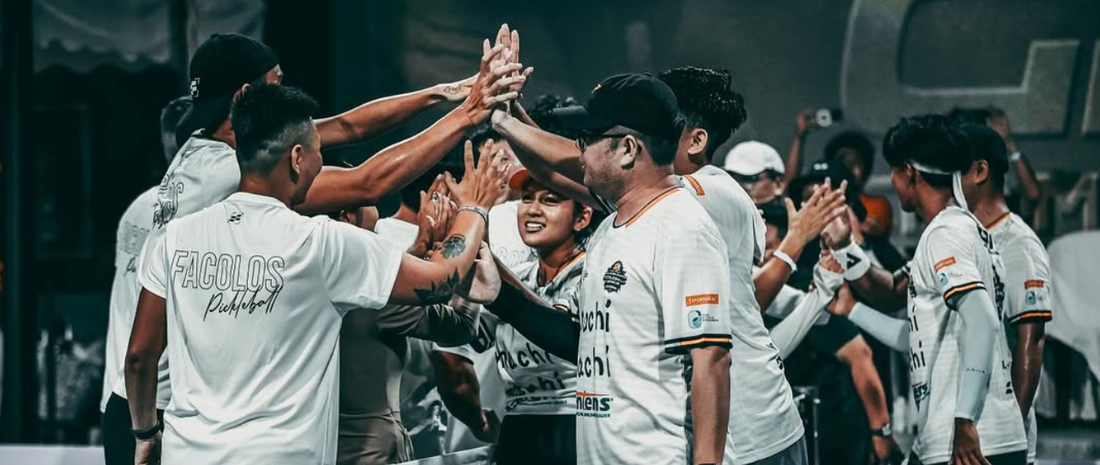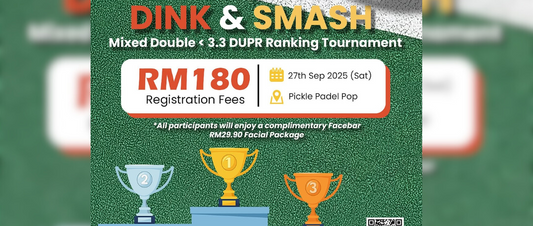
Trailblazer Pathways: How International Training Programs Shape Asian Pickleball Talent
Sureena Shree ChandrasekarAs pickleball sweeps across Asia, the hunger to compete internationally is growing. Local tournaments are no longer enough for players who want to test their skills against the world’s best. This is where international training programs such as the UPA Trailblazer initiative have become game changers.
These pathways give Asian athletes more than just an invitation to play. They provide a bridge between regional promise and global performance, offering exposure to the toughest conditions, elite coaching, and an environment that demands growth.

Training Beyond Borders
Training abroad is not glamorous. For many young players, it means uprooting from their families, juggling visas and logistics, and adapting to unfamiliar cultures. Imagine leaving Malaysia during festive seasons like Raya, or saying goodbye to home comforts for months at a time all to chase a dream on unfamiliar courts.
But once they arrive, the real test begins. The U.S., home to the biggest pickleball stages, presents a level of intensity that players in Asia rarely experience. Training days often begin before sunrise, with long endurance runs, multiple court sessions, and gym work in between. Outdoor conditions also add to the challenge, scorching desert heat, unpredictable winds, or even sandstorms in states like Arizona.
The physical strain is matched by the mental one. International training pushes athletes to their limits. Players face days of frustration where nothing seems to work, where coaches demand more than they think they can give, and where tears, setbacks, and self-doubt are part of the process. Yet, it’s in these moments that resilience is built.
The Power of Shared Experience
One of the most underrated aspects of programs like Trailblazer is the community it fosters. Athletes from across Asia come together often strangers at first and leave as family. Living, training, and competing side by side creates bonds that transcend nationality.
For a Malaysian player, this might mean finding support from a Japanese roommate, a Filipino training partner, or a Chinese doubles teammate. These relationships don’t just ease the loneliness of being abroad; they also form a network of peers who will rise together as the next generation of Asian pickleball leaders.
Returning Stronger
When athletes return home from these programs, they bring back more than just better strokes. They return with a new mindset, sharper decision-making, greater patience during rallies, and a deeper understanding of what it means to compete like a professional.
This ripple effect is powerful. Local players watch and learn, tournament organisers take notice, and suddenly the standard across the region rises. One athlete’s growth becomes a catalyst for the community.

Why It Matters for Asia
Pickleball in Asia is still young compared to the United States, but international pathways are accelerating its maturity. These programs are helping close the gap, proving that Asian athletes can not only compete but also thrive on global stages.
More importantly, they are rewriting the narrative of what’s possible. For juniors, women, and newcomers, seeing players from their region train and succeed abroad provides tangible proof that the sport can be more than just a pastime. It can be a career.
The Next Chapter
As pickleball continues to expand, the question isn’t whether Asia will produce world-class players, it's how many. Programs like UPA Trailblazer are laying the groundwork by giving young talents the tools, experiences, and mental fortitude to succeed.
The challenge now is sustaining this momentum. More opportunities for international training, greater investment in junior development, and stronger domestic support systems will ensure that Asia’s pickleball rise is not a flash in the pan, but a long-term movement.
Trailblazer pathways are not just about producing individual champions. They are about planting seeds that will grow into a generation of athletes who elevate the sport across an entire continent.
This article is an excerpt from our interview with Mia Azizul.
Watch the full interview here.
Photos by @cfongraphy via Instagram.









